How to Solve Common Customer Service Challenges

Sorry, there were no results found for “”
Sorry, there were no results found for “”
Sorry, there were no results found for “”
Customers are more aware and tech-savvy than ever. This presents unique challenges for organizations and customer support managers.
Did you know that, according to HubSpot, 43% of support agents and 51% of companies say their biggest challenge is not having enough time in the day?
This lack of time makes handling issues like angry customers, serving multiple clients simultaneously, evolving customer expectations, service outages, and needing the right tools even harder.
The challenges don’t end—answering satisfactorily, understanding customer needs, and managing ticket backlogs—they continue.
These challenges keep support customer service representatives on their toes to ensure their customers have a great experience.
In this article, we’ll discuss the ten primary customer support challenges and what you can do to solve them and streamline your support operations.
The job of a customer success manager is full of struggles, constant hurdles, and various tasks, from resolving complex issues to managing customer retention.
From handling irate customers to keeping up with evolving expectations, here are the 10 biggest customer service challenges and their solutions to help you enhance your customer experience.
Read more about what a day in the life of a customer success manager looks like here
According to research, customers consider speed of response (89%), speed of resolution (89%), and friendliness (82%) the most important aspects of their customer service experience.
This is tricky for support teams. Teams must respond quickly and handle multiple customers simultaneously, which stretches your reps thin and makes it hard to provide the quality service each customer expects.
To manage multiple customer interactions, consider implementing robust customer success software for multichannel communication. Tools like live chat, chatbots, and automated ticketing help streamline this process.
Train your customer service team on prioritization techniques, such as addressing urgent queries first and using template responses for everyday issues to save time. Additionally, maintaining an updated knowledge base empowers customers to find answers independently, reducing the load on your customer service agents.
Imagine a customer asking a question your agent doesn’t know the answer to—or worse, they give the wrong answer. There goes your customer’s trust in your brand.
This leads to frustration and a potential loss of confidence in your service. When agents lack the knowledge to provide accurate answers, it reflects poorly on your company and drives customers away.
Ensure your team has access to a comprehensive knowledge base regularly updated with accurate information. Invest in continuous training programs to inform your agents about new products, services, and policies.
Implementing a system for tracking common questions and their answers helps agents respond more efficiently. Modern support software leverages AI to do this task. An AI knowledge manager helps your agents find answers within seconds.
After more than one bad experience, around 80% of consumers say they would do business with a competitor instead.
Customers can be challenging to communicate with when upset, making resolving their issues difficult. For example, a customer who has repeatedly faced delays in their service might vent their frustration at your agent, making the situation tense and demanding swift, empathetic action.
To manage frustrated customers effectively, here are a few things you could do:
One frustrating experience for customers is starting from scratch when interacting with a new agent. When support requests are handled in silos, customers often need to repeat their issue because their query is assigned to a different agent each time.
To address this issue, implement a unified customer support system that tracks and logs all interactions. This way, any agent can access the customer’s history and continue from where the previous interaction left off.
Use CRM software that integrates with your support tools to view each customer’s journey. Train your agents to review past interactions before responding to new queries. Additionally, assign dedicated account managers for high-value customers to ensure continuity and a personalized experience.
Service outages are unavoidable and leave customers feeling frustrated and helpless. When your service unexpectedly drops, customers quickly become anxious and need immediate answers.
For instance, during a sudden server outage, your support team may be inundated with calls and messages from panicked users who cannot access their accounts. This creates a chaotic and stressful situation.
Ensure your support team is equipped to provide timely updates about the issue and its progress. Use multiple channels to keep customers informed, such as email, social media, and your website.
Encourage your reps to acknowledge the frustration customers are experiencing and apologize sincerely. Avoid making promises; instead, provide honest updates, even if there is no estimated time for resolution yet. Additionally, set up automated responses and status pages that offer real-time updates on the outage.
Customers often request things that are beyond current offerings or capabilities.
They might ask for discounts you can’t provide, features you don’t offer, or customizations that are out of scope. The customer service challenge lies in saying no while maintaining a positive relationship.
Before outright declining a request, take a moment to see if there is a creative workaround. Evaluate if the request can be met with minor adjustments or if it aligns with plans.
Consider the resources, time, and costs involved. It might be worth accommodating if it’s feasible and the benefits outweigh the costs. If not, politely and factually explain to the customer why the request is unachievable.
Always aim to offer alternative solutions or compromises that might satisfy their needs.
This approach helps maintain a positive customer relationship and demonstrates your willingness to explore every possible avenue to meet their needs.
Slow response times frustrate customers, impacting their loyalty and satisfaction. Studies reveal concerning trends:
Customers feel neglected and unimportant when your support team takes too long to respond. For instance, if tickets or calls bounce around from one department to another or chats pile up in the queue, customer patience wears thin, and they start looking for alternatives.
To tackle slow response times, you need to streamline your internal processes by implementing the following changes:
Ensuring customer service is aligned with the customer journey can be challenging. When different parts of the journey are coordinated, it leads to customer consistency and satisfaction.
Customer service representatives need to handle each interaction in a way that matches the customer’s lifecycle stage and touchpoint.
To address this challenge, start by mapping out your customer journey:
Customer support is costly, and picking the right tools and software is crucial. Simply using the same tools as your competition doesn’t guarantee success.
If the tools you choose don’t meet your unique business needs, they complicate processes, slow support times, and frustrate your customer service reps and customers. For instance, an advanced tool might be overkill for a smaller support team, causing unnecessary complexity and inefficiency.
To find the perfect tools for excellent customer service, ensure collaboration between sales, marketing, and customer support teams. Identify technologies that enhance the customer journey, from initial interaction to post-sales support.
To streamline customer interactions, consider support channels like phone, email, live chat, self-service, and community forums. Determine which channels best fit your team’s needs and select adequate support and engagement tools. Look for solutions that offer in-app guidance, user nudges, chatbot integration, and personalized self-help options.
Many customer service teams rely on multiple, often outdated, software systems. This forces customer service representatives to juggle 8-10 programs to resolve a single issue, complicating the entire support process.
Plus, outdated technology makes it challenging for agents to provide quality service, leading to frustration with customers and support staff.
To streamline your support process, you need to reconsider your technology stack. Instead of relying on numerous disjointed tools, adopt a modern platform that integrates multiple solutions.
Look for software that combines essential features like ticketing, live chat, and customer relationship management into one user-friendly interface. This integration reduces the need for agents to switch between programs, saving time and improving efficiency.
Discover ClickUp – the AI-driven platform custom-built to optimize your productivity. From task automation to data integration, ClickUp adapts to your workflow, enhancing efficiency across your organization.
Let’s look at its offerings and features for customer support teams in detail:
ClickUp’s Customer Support platform transforms your support staff into client success champions, enabling seamless management of inquiries, efficient problem resolution, and enhanced team collaboration, all geared towards delivering exceptional customer service. Some of its best features include:
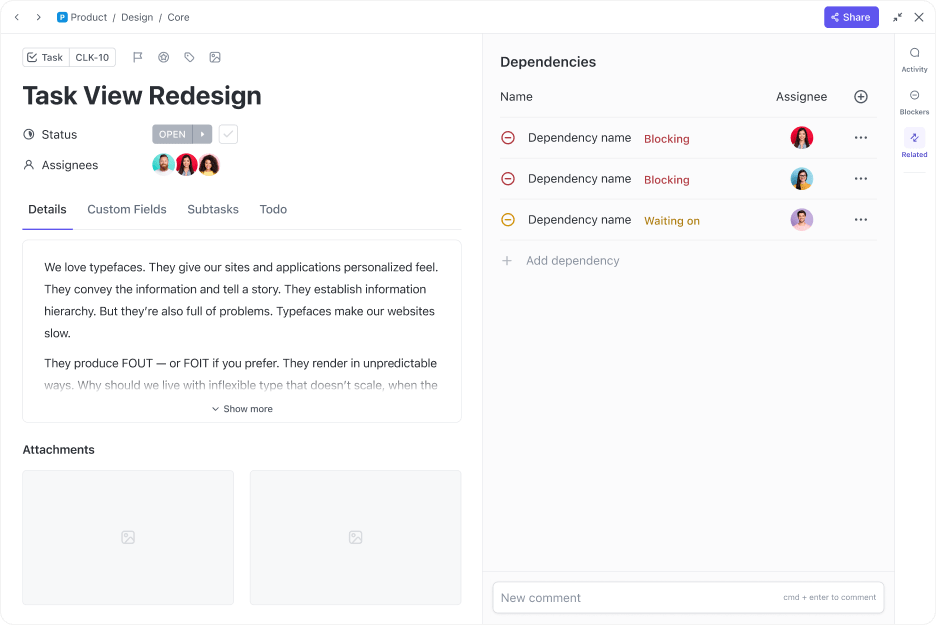



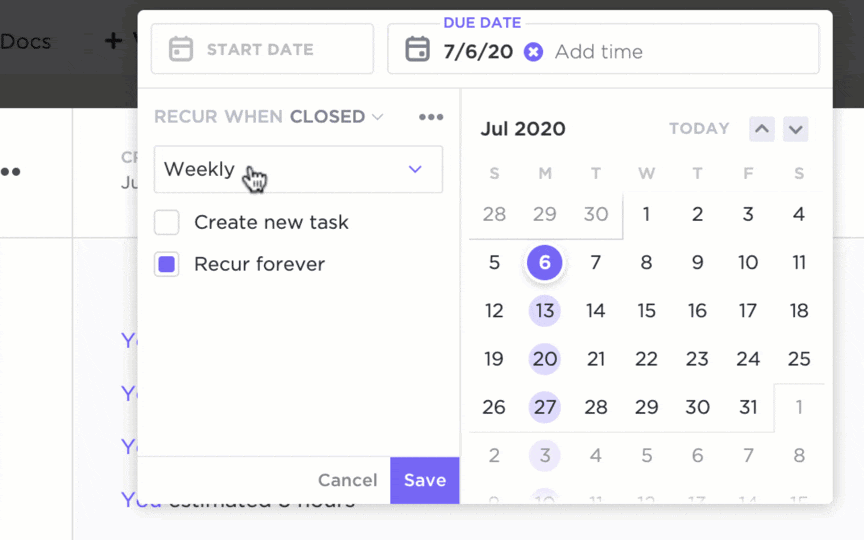
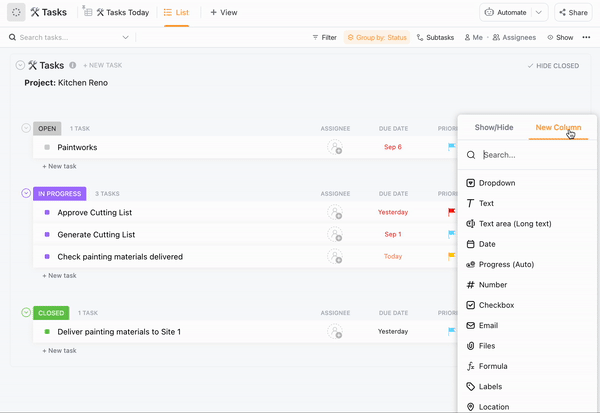
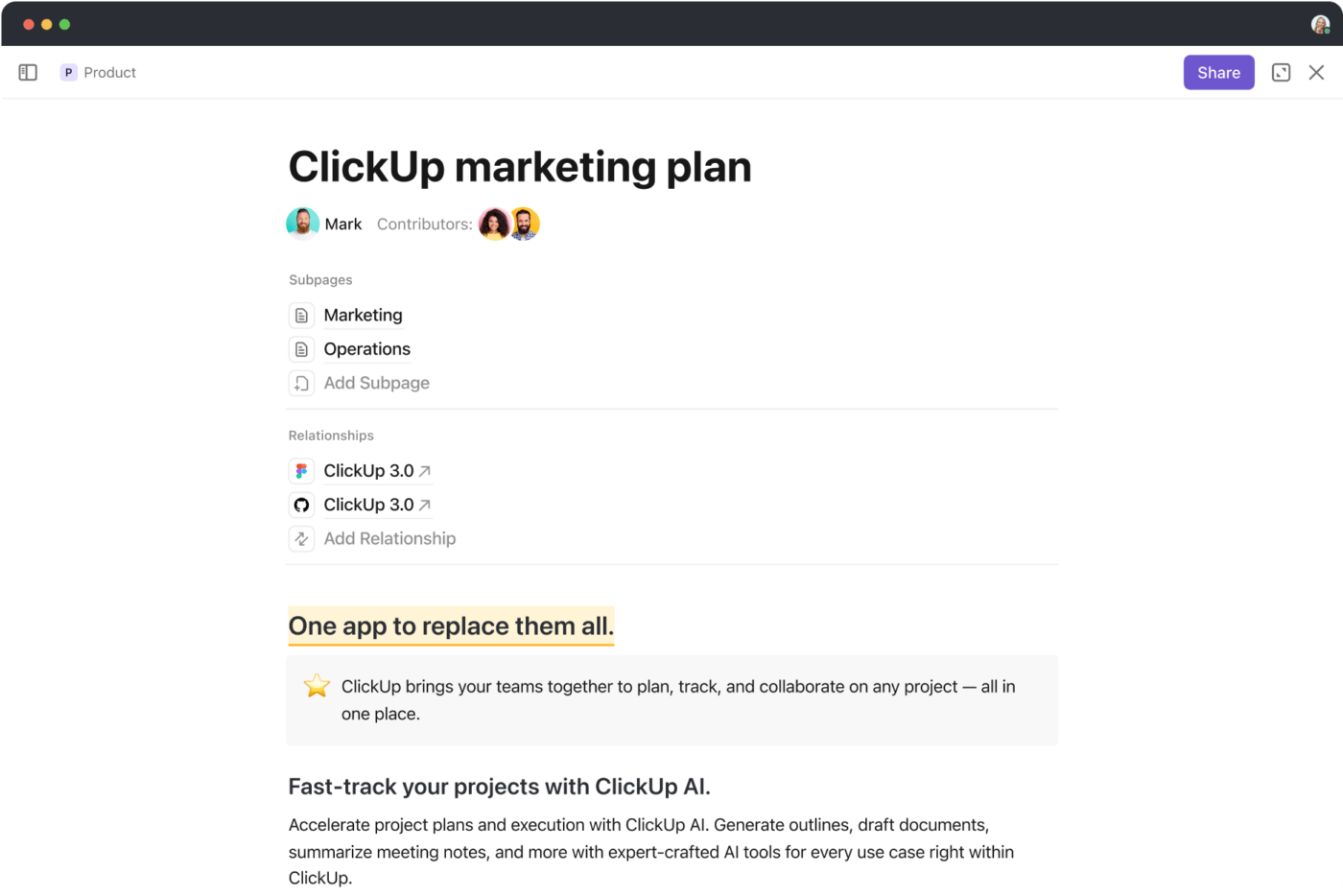
ClickUp’s AI, Brain, revolutionizes customer support operations by integrating advanced AI capabilities across your company’s entire ecosystem of tasks, documents, and communications.
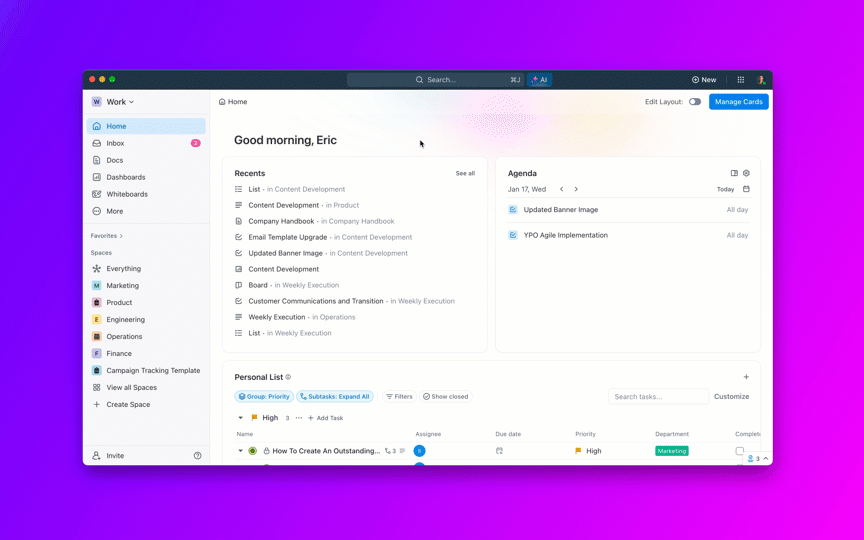
This cutting-edge tool offers several powerful features, including:
ClickUp CRM centralizes your customer outreach, eliminating communication silos and accelerating interactions.

It lets you build a comprehensive customer database to store and analyze contact information, customers, and deal details. It also allows you to link tasks, documents, and other elements, making tracking all related work in one place easy.
Additionally, you enhance your team’s efficiency by utilizing various CRM templates available within ClickUp.
ClickUp’s extensive integrations ecosystem enhances functionality and streamlines workflows. With over 1,000+ tools to connect for free, ClickUp facilitates integration with popular applications like Slack, GitHub, Google Drive, and HubSpot.

These integrations facilitate automated updates and streamline task creation, turning ClickUp into the hub for all project and client management needs.
ClickUp Templates offer a versatile range of pre-designed frameworks that help streamline your projects and processes. Whether you’re looking to enhance workflow efficiency or improve team collaboration, these customizable customer service templates are designed to meet the diverse needs of any team or project.
The ClickUp Client Success Collaboration template is designed to streamline the customer journey from sales to onboarding and support. It’s fully customizable to effectively align your sales and support teams, optimizing the customer experience.
With predefined views and statuses, plus an automation feature, this template directly supports team collaboration and workflow efficiency. It’s beneficial for support teams looking to enhance client satisfaction and improve productivity by keeping your customer support team on the same page throughout the customer lifecycle.
The ClickUp Customer Success Plan Template is tailored to help businesses enhance their ability to retain and expand their customer base by ensuring exceptional customer experiences from the outset. This fully customizable template allows you to set specific success criteria for each customer, streamline onboarding and training processes, and monitor ongoing progress throughout the customer lifecycle management.
It includes custom statuses, fields, and various views to manage customer relationships efficiently. This template clarifies team roles and expectations and helps identify opportunities to meet customer needs.
Businesses must embrace modern customer management strategies, streamlined processes, integrated technologies, and a customer-focused approach to solve customer service challenges.
And ClickUp embraces all of that, all at once. Leveraging ClickUp’s comprehensive suite of features—from task management to AI-driven support— enhances team efficiency and significantly improves the customer experience.
Ready to transform and set your organization up for excellent customer service?
Sign up for ClickUp today and start your journey towards exceptional customer support.
© 2025 ClickUp